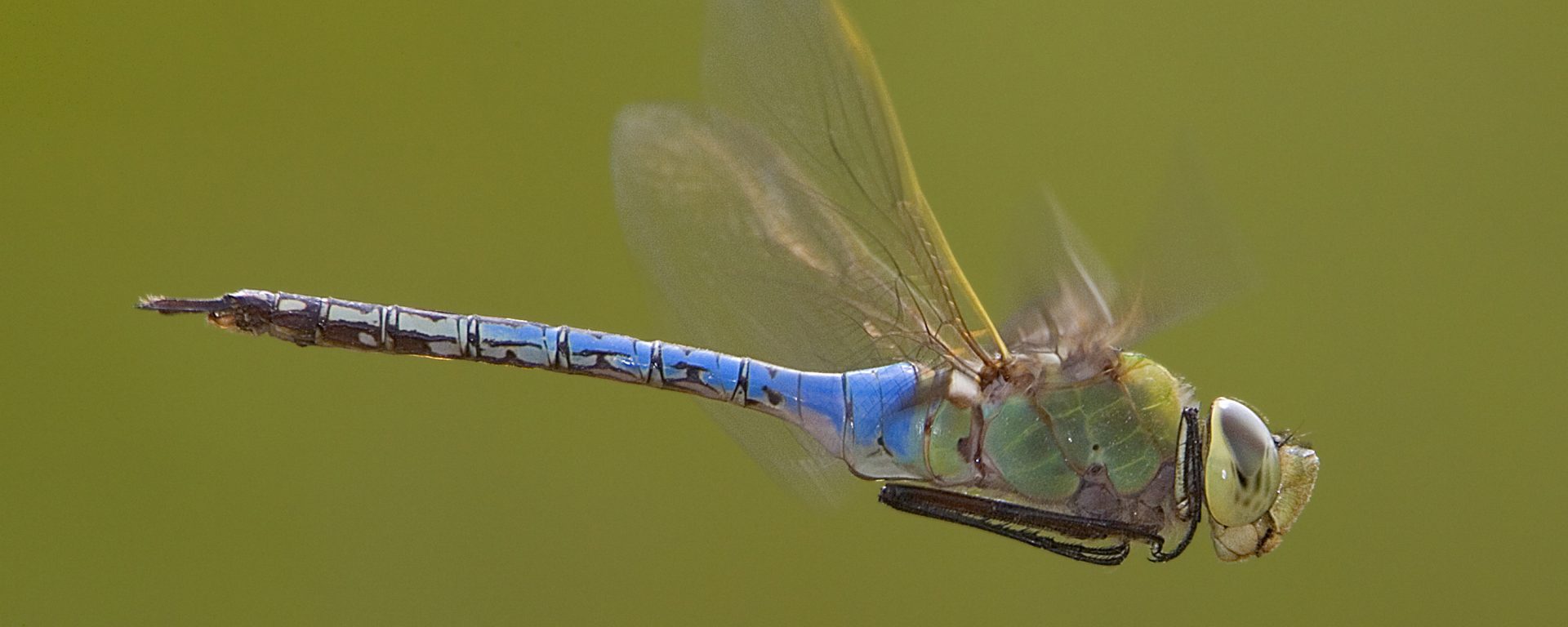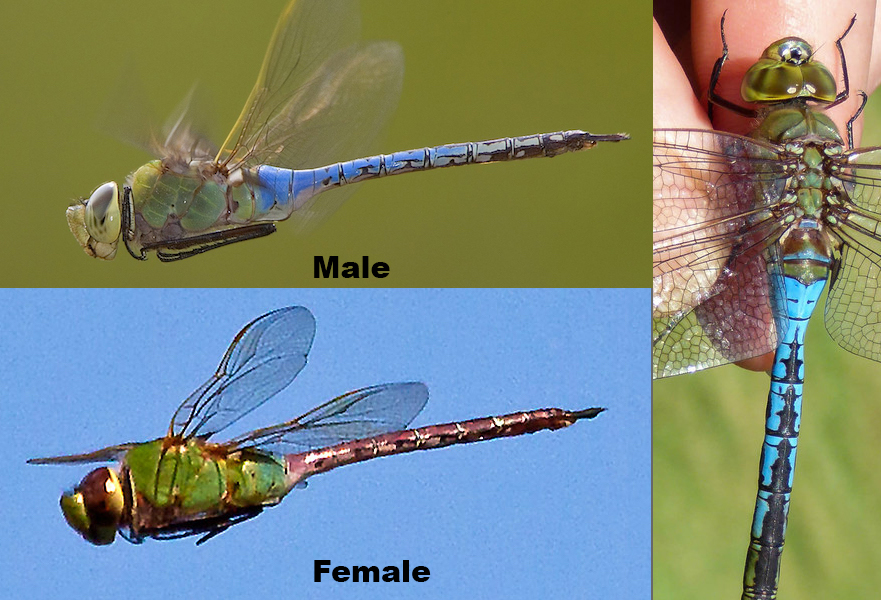Owing to its itinerant and migratory nature, this large darner can appear just about anywhere—at a pond in your own backyard, along a lake shore, down a street, or above a field— Common Green Darner is probably America's most cosmopolitan dragonfly. And, it is relatively easy to identify!
At nearly 3 inches long (about the length of your pointer finger) with a wingspan of 4 inches, this is the largest dragonfly in North America. It is also one of the first dragonflies to be spotted in our skies in the spring. When they arrive, males will patrol back and forth above beaver ponds, farm ponds, lakes, and other quiet water bodies. A pair of binoculars will help you spy on them more readily, but you should be able to identify them easily without their aid. Have your camera or smartphone ready to capture a photo as they speed back and forth.
Key Field Marks
- Thorax (body) unmarked bright green. Look for a streak of green when they are flying quickly back and forth.
- Male abdomen (tail) has a dark purple dorsal stripe flanked by bright blue lateral stripes. When cool, the blue stripes change to purple and may become so dark as to blend in with the dorsal stripe to give a uniform purplish look (top photo).
- Female abdomen is rusty brown to purple (bottom photo).
- Both sexes have a large black spot, a “bull’s eye” in front of the eye (right photo). This is only viewed from above and when they are resting.
Links for more information about Common Green Darners
- Browse a map with over 600 Vermont records, view images and more on the Vermont Atlas of Life species page.
- See images and locations of Common Green Darners reported in Vermont to iNaturalist.
- Learn more about how VCE scientists teamed up with others to uncover their astonishing migration.
- Check out the recording of the Darner Flight Watch Webinar (link here) with Mike Hallworth and Julia Pupko for an overview of Green Darner phenology, migration, and identification.








